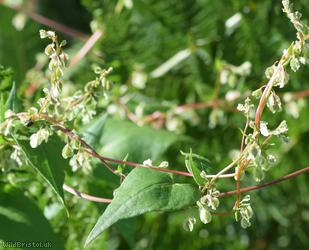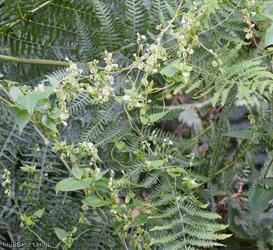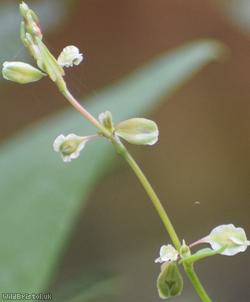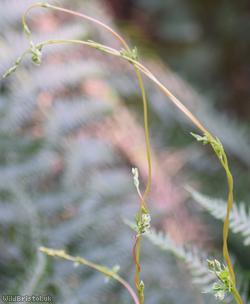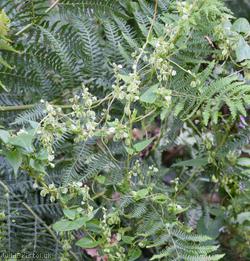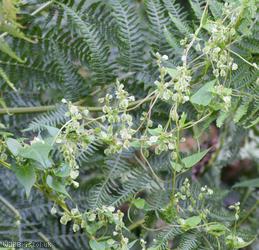Copse-bindweed - Fallopia dumetorum
Favourite Photos
Species Description
Rare and very local in parts of the South, mainly around Oxford. It is often very erratic in appearance seemingly popping up in random places. Even in localities it is often absent for some years before showing again (sometimes on mass) particularly when following the felling, thinning or coppicing of hedgerows and woodland. The seeds must have a have the ability to remain dormant for years before growing conditions are just right and are presumably dispersed by birds and small mammals. Habitat includes: Well-drained soils in places such as hedgerows, thickets, wood-borders etc. Growing habit: Climbing Annual. Height: Up to 2 m. Flowers: .
Stace 4:
Fallopia dumetorum (L.) Holub (Polygonum dumetorum L.) - Copse-bindweed.
Very like F. convolvulus but stems climbing to 2m; leaves more narrowly acuminate; fruiting pedicels 3-8mm; outer tepals broadly winged in fruit; achenes 2.5-3mm, shiny; 2n=20. Native; in hedges and thickets; rare and very local in South Central England, formerly North to Caernarvonshire. Possibly not distinct from the American F. scandens (L.) Holub, which has priority.
Key:
- Annual; inflorescences with 1 main axis
- Fruiting pedicels 3-8mm; achene 2.5-3mm, shiny
Useful Links:
Online Atlas of the British and Irish Flora
